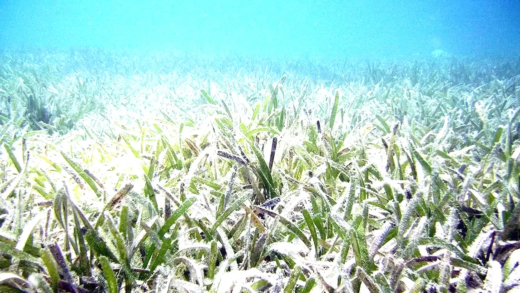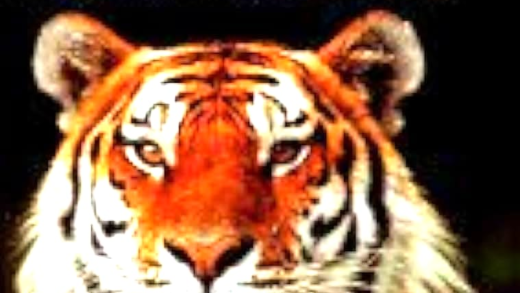Peregrine falcons are the fastest birds, diving at speeds over 240 mph, thanks to their aerodynamic bodies and powerful muscles. They use various hunting techniques, play a critical role in ecosystems, and face threats like habitat loss and pollution. Conservation efforts have helped their populations recover. Interesting facts include their nesting habits and impressive migration patterns. The science of their speed highlights the importance of aerodynamics and muscle power in their hunting strategies.
Peregrine Falcon Speed: What Makes Them the Fastest Bird?
Peregrine falcon speed is nothing short of astonishing. These incredible birds can dive at speeds exceeding 240 miles per hour (386 kilometers per hour), making them the fastest birds on the planet. But what enables them to achieve such remarkable speeds? The secret lies in their unique physical characteristics.
- Aerodynamic Body Shape: Peregrine falcons have a streamlined body that reduces drag during their high-speed dives.
- Powerful Muscles: Their strong pectoral muscles enable quick acceleration and rapid movements.
- Specialized Wing Structure: The wings are long and pointed, which enhances their ability to cut through the air efficiently.
- Exceptional Eyesight: Their keen eyesight allows them to spot prey from great distances, aiding in their hunting strategy.
These adaptations not only contribute to their speed but also enhance their hunting efficiency. In a world where survival depends on speed and agility, the peregrine falcon stands as a master of the skies.
Hunting Techniques of Peregrine Falcons
Peregrine falcons utilize various hunting techniques that showcase their aerial agility and precision. These strategies are critical for their survival and are fascinating to observe.
- High-Speed Dives: They often hunt by soaring high above their prey and then diving at incredible speeds to catch them off guard.
- Ambush Tactics: Falcons can also perch silently on high vantage points, waiting for unsuspecting prey to come into range.
- Wing Positioning: During a dive, they tuck in their wings to minimize resistance, allowing for a faster descent.
- Vocalizations: They may use specific calls to communicate with mates during the hunt, ensuring coordinated attacks.
These hunting techniques not only emphasize their predatory skills but also illustrate the evolutionary adaptations that make them successful hunters.
Comparing Speed: Peregrine Falcons vs. Cheetahs
When comparing speed, peregrine falcons and cheetahs are often regarded as the champions of their respective domains. While the peregrine falcon speed during dives can reach 240 mph, the cheetah can sprint up to 60-70 mph (97-113 kilometers per hour) on land.
This comparison highlights the unique adaptations of both animals:
- Falcon: The falcon’s speed is achieved through aerodynamic adaptations and muscle power during dives.
- Cheetah: Cheetahs rely on their powerful leg muscles and flexible spine to achieve rapid acceleration on land.
While the falcon excels in the air, the cheetah dominates the ground. Both species are marvels of nature, showcasing the diverse adaptations that allow them to thrive in their environments.
Role in Ecosystem: Why Are They Important?
Peregrine falcons play a crucial role in their ecosystems as apex predators. Their presence indicates a healthy environment and contributes to maintaining ecological balance.
- Control of Prey Populations: By preying on smaller birds, they help regulate the populations of various species, preventing overpopulation.
- Indicator Species: The health of peregrine falcons can reflect the overall health of their environment, making them vital for ecological assessments.
- Food Chain Dynamics: As top predators, they influence the behavior and distribution of their prey, impacting the entire food web.
Understanding the role of peregrine falcons in ecosystems underscores their importance in biodiversity and conservation efforts.
Adaptations for Hunting: What Helps Them Succeed?
Adaptations for hunting in peregrine falcons are fascinating and crucial for their survival. Their physical and behavioral traits make them exceptional hunters. Key adaptations include:
- Sharp Vision: Peregrine falcons possess extraordinary eyesight, allowing them to spot prey from great distances. Their keen eyes can detect motion and differentiate colors, aiding in quick decisions while hunting.
- Wing Structure: Their long, pointed wings allow for high-speed dives. This aerodynamic design minimizes air resistance, enabling them to reach incredible speeds when chasing prey.
- Flexible Talons: Strong, curved talons help them grasp and immobilize their prey effectively. These talons are essential for catching birds mid-flight.
- Rapid Reaction Time: Peregrine falcons have quick reflexes, allowing them to react swiftly to changes in their environment, which is critical during high-speed pursuits.
These adaptations not only enhance their hunting success but also ensure they remain dominant in their ecosystems.
Communication in the Wild: How Do They Interact?
Peregrine falcons communicate through a combination of vocalizations and body language, essential for their social interactions. Key aspects of their communication include:
- Vocal Calls: They use a range of calls, including high-pitched chirps and whistles, to convey messages to mates and rivals. These calls are crucial during mating seasons and when defending territory.
- Body Language: Posture and wing displays serve as visual signals. For instance, a falcon may spread its wings to appear larger when threatened.
- Coordinated Hunting: During hunts, they may vocalize to coordinate attacks, ensuring they can catch prey more effectively.
Understanding their communication methods sheds light on their social behaviors and interactions within their habitats.
Threats to Peregrine Falcons: What Challenges Do They Face?
Peregrine falcons face various threats that impact their populations. Key challenges include:
- Habitat Loss: Urbanization and deforestation reduce their natural habitats, limiting nesting sites and hunting grounds.
- Pollution: Chemical pollutants, particularly pesticides like DDT, have historically harmed peregrine falcon populations by thinning eggshells and reducing reproductive success.
- Climate Change: Changes in climate affect prey availability and nesting conditions, posing additional risks to their survival.
- Human Disturbance: Nesting sites are often disturbed by human activities, leading to decreased breeding success.
Awareness of these threats is crucial for conservation efforts aimed at protecting peregrine falcons and ensuring their continued presence in the wild.
Conservation Status: How Have They Changed Over Time?
The conservation status of peregrine falcons has improved significantly over the years. Once endangered due to pesticide use and habitat destruction, successful recovery programs have led to:
- Population Rebound: Conservation efforts, including captive breeding and reintroduction programs, have helped restore their populations in many regions.
- Legal Protections: Laws and regulations have been established to protect peregrine falcons and their habitats, ensuring safe nesting sites and reducing human impact.
- Public Awareness: Educational campaigns have increased awareness about the importance of peregrine falcons in ecosystems, fostering support for their conservation.
While their status has improved, ongoing efforts are necessary to ensure that peregrine falcons continue to thrive in the wild.
Fascinating Insights into Peregrine Falcons
Peregrine falcons are not only remarkable for their speed but also for their unique behaviors and characteristics. Here are some interesting facts that showcase their exceptional qualities:
- Nesting Habits: Peregrine falcons typically nest on high cliffs or tall buildings, providing them with a strategic vantage point to spot prey. They often reuse the same nesting sites year after year.
- Migration Patterns: These birds are known to migrate long distances. Some populations travel thousands of miles between breeding and wintering grounds, demonstrating incredible navigational skills.
- Unique Feathers: Their feathers are specially adapted to withstand high speeds and sudden changes in direction. The structure of their feathers helps reduce turbulence and drag, enhancing their flying capabilities.
- Social Structures: While often solitary outside of breeding season, peregrine falcons can exhibit social behaviors when hunting or during migration, sometimes forming small groups.
These fascinating aspects of peregrine falcons highlight their adaptability and resilience in various environments.
The Science Behind Their Incredible Speed
Peregrine falcon speed is a marvel of nature, primarily achieved through a combination of aerodynamic design and muscular power. Here’s how they accomplish such astounding velocities:
- Aerodynamics: The falcon’s body is streamlined, which minimizes air resistance. The pointed wings and tapered tail allow for efficient movement through the air, especially during high-speed dives.
- Muscle Power: The pectoral muscles of the peregrine falcon are exceptionally strong, enabling rapid acceleration. This muscle power is crucial during the initial phase of their dive when they aim to gain maximum speed.
- Wing Mechanics: When diving, peregrine falcons tuck in their wings to reduce drag, allowing them to plunge towards their prey at incredible speeds. This technique is essential for catching quick-moving birds.
- Visual Acuity: Their sharp eyesight not only helps them spot prey but also allows them to judge distances accurately, which is vital when diving at high speeds.
Understanding the mechanics behind the peregrine falcon’s speed reveals the intricate adaptations that make them one of nature’s most impressive hunters.





Comments are closed.